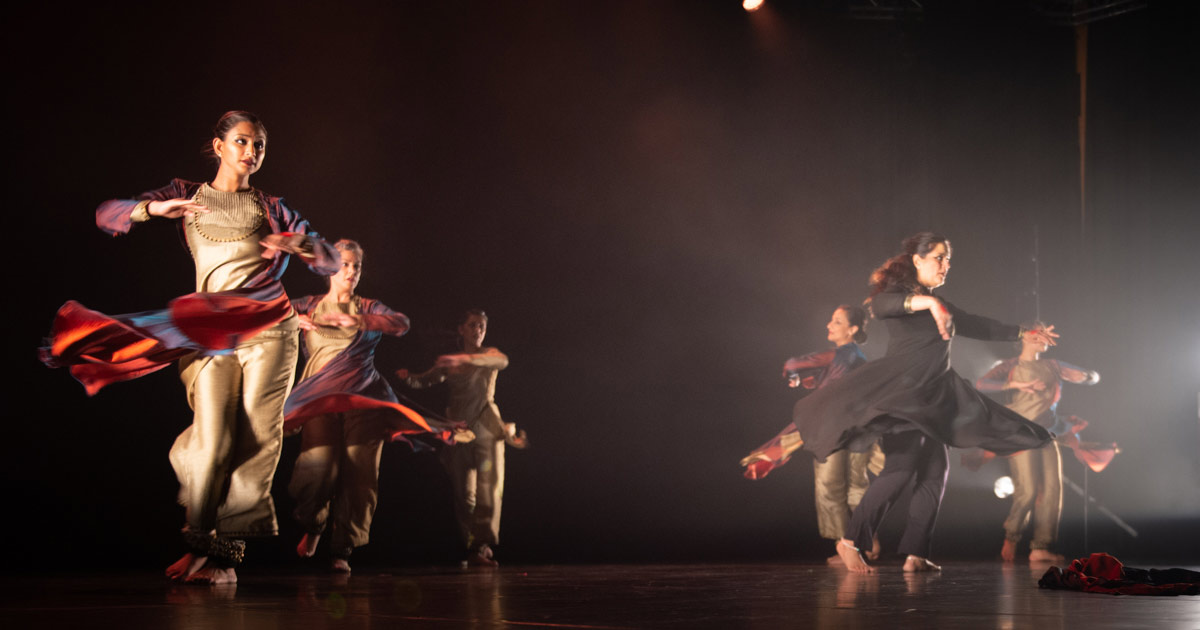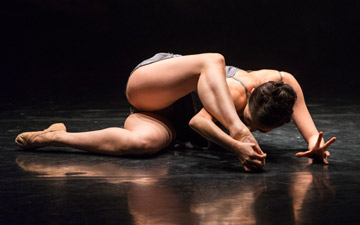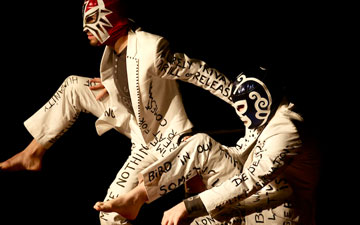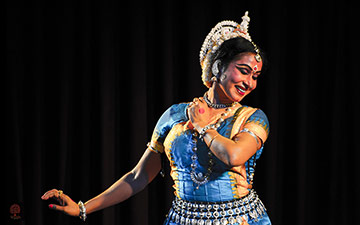
© Simon Richardson. (Click image for larger version)
Gauri Sharma Tripathi, Sonia Sabri and Mayuri Boonham
Descendants: Silhouette – the Borderline, Spill, Eve Rising
★★★★✰
London, Purcell Room
29 September 2019
www.associationsargam.com/gauri_sharma
www.ssco.org.uk
www.atmadance.com
www.southbankcentre.co.uk
Akademi, the umbrella organisation for South Asian dance in the U.K, is celebrating its 40th anniversary with a series of events in the last months of the year. Three established female choreographers were asked to present new or existing work, performed as a triple bill in the intimate Purcell Room concert hall.
All three choreographers – Gauri Sharma Tripathi, Sonia Sabri and Mayuri Boonham – are concerned to extend the boundaries of South Asian classical dance forms and to challenge the limitations imposed on women. The performers made a powerful case for presenting Kathak and Bharatanatyam as bases for contemporary dance, expressing today’s experiences with an East/West perspective.

© Simon Richardson. (Click image for larger version)
Opening the programme was Silhouette – the Borderline, created by Gauri Tripathi and Ashley Lobo with performers from ANKH Dance UK. Five women, identically dressed in long tunics over trousers, with light silk overcoats in different shades, looked like a sisterhood. Each had her own personality, telling her story by treating her coat differently: sewing it, washing it, laying it out with others in a pattern. The music, by Niraj Chag, ranged from birdsong to vocals and percussive African rhythms, suggesting that the women represented many nationalities. Their common language was the footwork of Kathak, emphasised by bells around their ankles.
They were bound into a group by the presence of Tripathi herself, all but invisible at first in black. She then became a daemonic force, like Myrtha, queen of the Wilis. She performed an incantation, hands outstretched and upraised together, while the corps of five kept their arms folded. Inspired by her, they took up their coats, brandishing them as banners as they whirled in Kathak spins. The light faded when they stood still together at the end, triumphantly united.
Next came a solo, Spill, by Sonia Sabri, who has run her own dance company since 2001. Her programme note invoked Sufi philosophy and religious ritual as well as her Kathak training to impart ‘the yearnings of the soul’. She used her body as an instrument, slapping herself and stamping while contorting her face and torso to express existential angst. Then, as recorded voices calmly recited words and syllables, combining into percussive chants, she became fluently co-ordinated, finding herself through a familiar language. Like a jazz musician, she developed a personal riff on Kathak conventions, rediscovering the harmony she sought. Hers was a very moving dance journey.

© Simon Richardson. (Click image for larger version)
For the third and last performance, Eve Rising, a marimba in two sections was installed at the rear of the stage. Larger than a xylophone, its wooden keys are amplified by long pipes underneath. It made an impressive background setting for the solo dancer, Archana Ballal, in choreography by Mayuri Boonham. At times, Ballal resembled a heroic figure from the Mahabarata, the Sanskrit epic, with the four male musicians (from the Royal Birmingham Conservatoire) as her subjects. Wielding their padded mallets, they played a minimalist composition by Peter Garland, the gentle tintinnabulation swelling as Ballal wove her spell.
She has trained in Bharatanatyam and contemporary dance, so her flexible physique can adopt a range of shapes, her hands and fingers highly expressive – unusual in a modern dancer. A painter or sculptor would delight in the three-dimensional volumes of her body. She assumed the martial posture of an archer drawing a taut bow – a potential destroyer as well as a creator. At one point, she sat on the edge of the stage, defiantly contemplating the audience. As in all three pieces, these female artists and choreographers are formidable figures, descendants of dance pioneers from the Indian sub-continent.

















You must be logged in to post a comment.